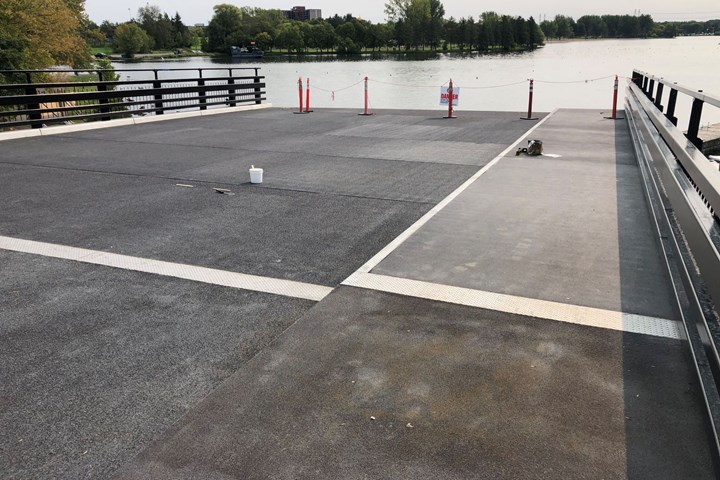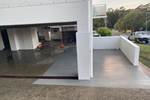Composite Advantage restores swing bridge deck with FRP
Six fiber-reinforced polymer (FRP) panels were prefabricated, and a sidewalk was also designed for the project. Deck length totaled 61.4 feet by 35 feet.

Photo Credit: Composites Advantage
Composites Advantage (Dayton, Ohio, U.S.) reported on Nov. 18 that it has recently rehabilitated the Hogs Back Bridge with its fiber-reinforced polymer (FRP) FiberSPAN deck system, after being selected by the National Capital Commission (NCC) for Canada in 2019 to replace the bridge deck and refurbish the swing mechanism.
Hogs Back Bridge, a unequal arm swing bridge, carries 26,000 cars per day across the 126-mile-long Rideau Canal, what is considered as the oldest continuously operating canals with manual locks that use mechanisms installed in 1832. From mid-May to mid-October, the bridge structure’s swing arm typically opens up to 20 times a day to allow boats exceeding heights of 9 feet to pass.
“We’ve been producing FRP decking for all types of bridges for more than two decades,” says Scott Reeve, marketing director for Composite Advantage, now part of the Creative Composites Group. “Its high strength and light weight make composite material especially appropriate for movable bridges. Corrosion resistance, high safety ratings, minimal maintenance and reduced strain on the bridge’s operating mechanisms are important advantages. But FRP’s design flexibility for these types of projects is particularly useful because it can accommodate complex geometry, multiple curvatures and in this case, a significant amount of internal steel for attachments.”
Six FRP panels were prefabricated; each one tailored to custom specifications. Other special features included an FRP sidewalk on one side of the bridge deck and a curb fitted with steel armor on the other side to accommodate snow plows.
Deck installation, says the company — which took place during June and July 2020— required multiple steps. Panels were laid in with the bridge’s swing arm open. The bridge was then closed to ensure proper deck and steel superstructure fit-up. Panels were then removed to lock in the steel configuration and the deck was reset for permanent installation. FRP bridge deck length totaled 61.4 feet with a width of 35 feet. The overall project was completed in October 2020.
Composite Advantage adds that it supplies FRP products for major infrastructure markets. To create its engineered solutions, the company says it pairs progressive designs with its capability to mold large parts, perform on-site assembly, and support customer installations. Back in May, Composites Advantage also applied its FiberSPAN FRP product to rehabilitate two pedestrian bridges in Atlanta, Georgia.
Related Content
-
KU researchers explore FRP materials for dams, levee reinforcement
To address aging infrastructure, a team of researchers at KU is conducting research into repairing and retrofitting 700-plus dams, levees and related structures nationwide using FRP materials.
-
Composites-reinforced concrete for sustainable data center construction
Metromont’s C-GRID-reinforced insulated precast concrete’s high strength, durability, light weight and ease of installation improve data center performance, construction time and sustainability.
-
SGL Carbon carbon fiber enables German road bridge milestone
A 64-meter road bridge installed with carbon fiber reinforcement is said to feature a first in modern European bridge construction, in addition to reducing construction costs and CO2 emissions.








.jpg;maxWidth=300;quality=90)







